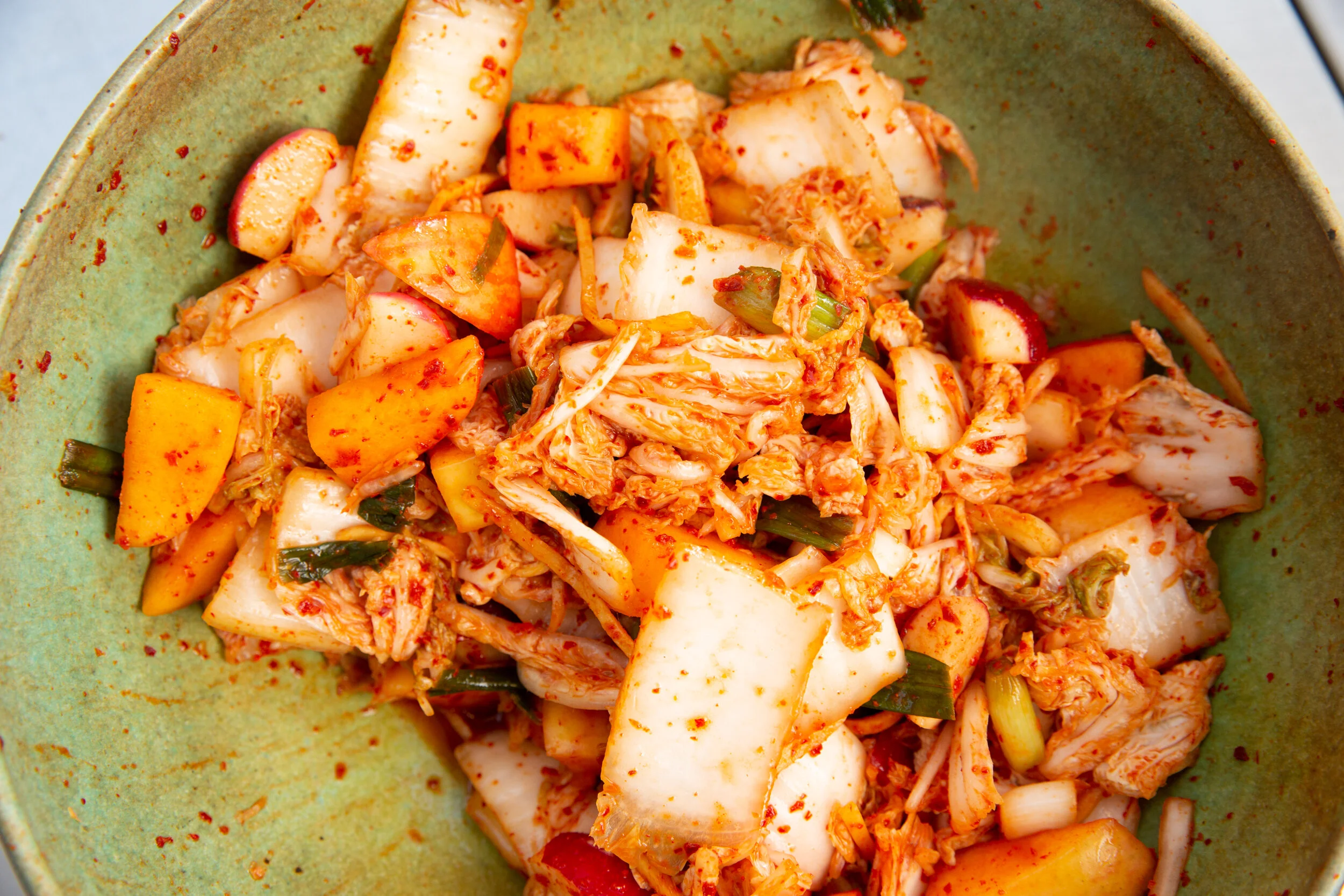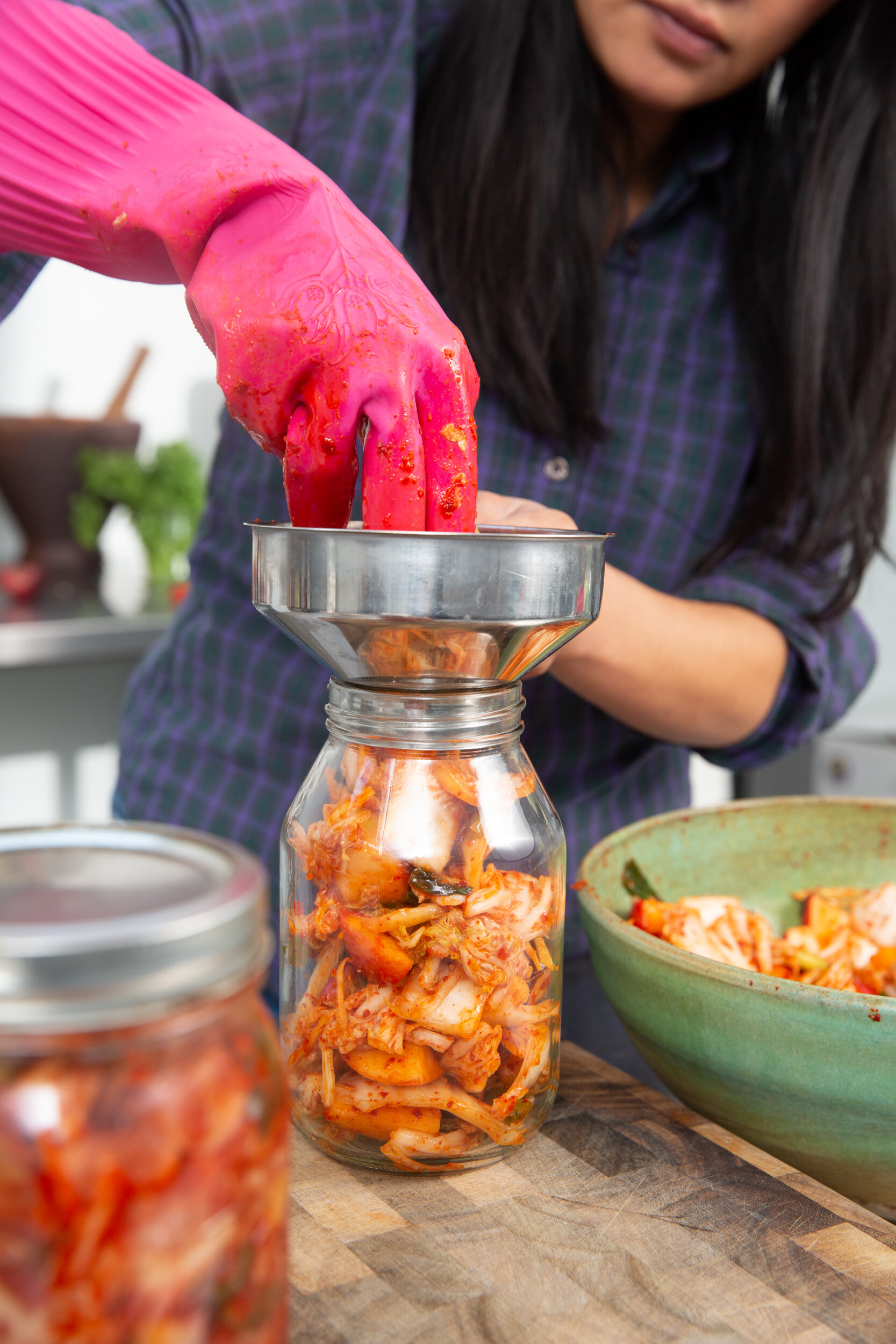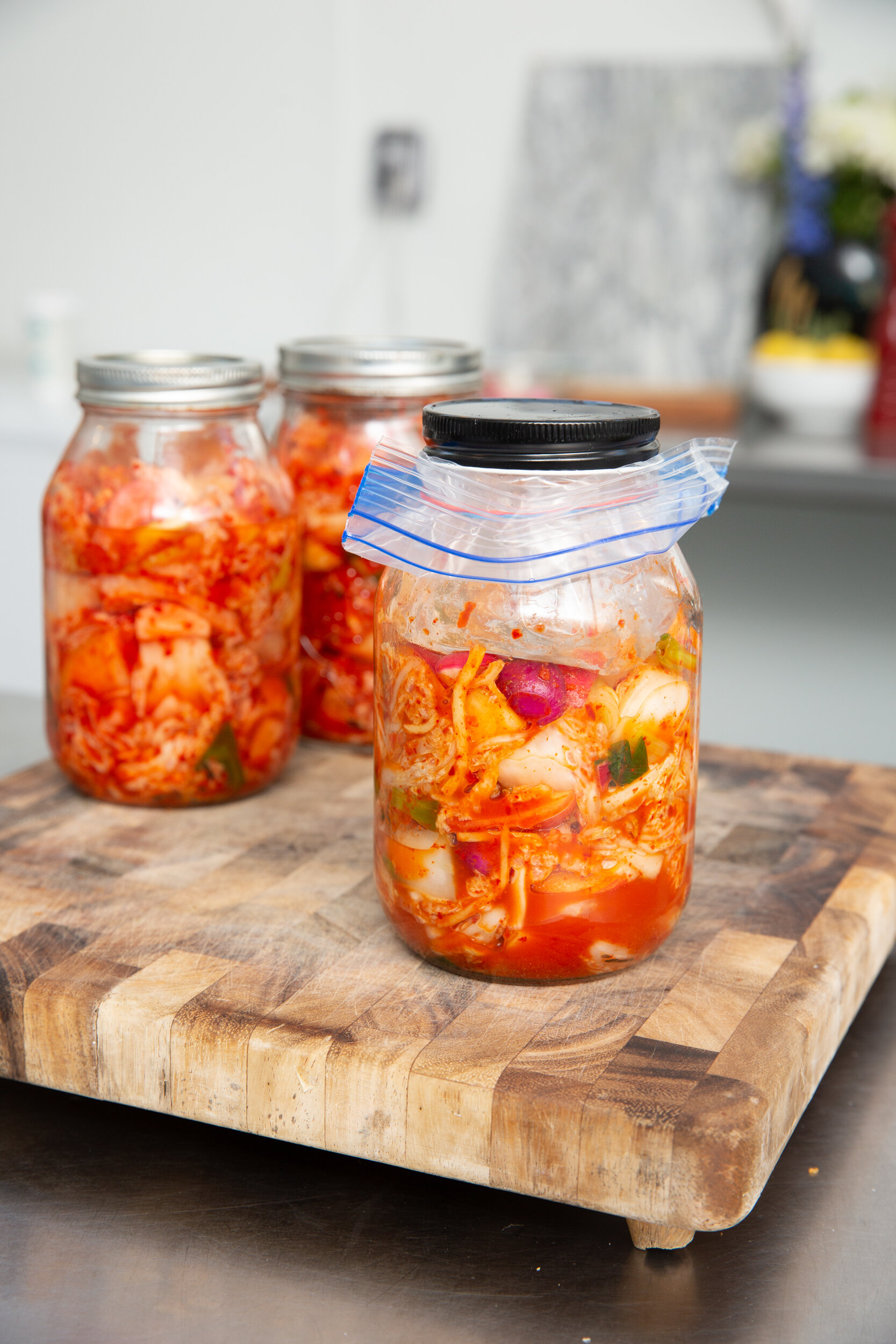Apple Radish Napa Kimchi, from Chi Kitchen
Recipe by Minnie Luong, Founder & Chi-EO, Chi Kitchen, Pawtucket, Rhode Island / Photos by Marianne Lee
This is a simple, quick kimchi that celebrates local apples, radishes and Napa cabbage.
Makes 2 quarts
½ medium Napa cabbage (2½ pounds), quartered and sliced into 2-inch pieces
2 large apples, cored and cut into 1-inch slices, slices halved
1 bunch radishes, trimmed and quartered
3 scallions, cut into 1-inch pieces
1 2-inch piece fresh ginger, peeled and julienned
2¼ tablespoons kosher salt
3 tablespoons gochugaru (Korean red pepper powder)
2 (1-quart) canning jars with lids, sanitized in the dishwasher
2 heavy duty zip-top bags
Combine Napa cabbage, sliced apples, radishes, scallions and ginger in a large mixing bowl. Add kosher salt, gochugaru pepper and mix really well with your hands, preferably wearing rubber gloves (to avoid potential stinging from the hot pepper to hands and eyes). Allow the mixture to rest for an hour, or until the cabbage is wilted and liquids are released.
Divide evenly and pack into clean, sanitized jars, pushing the vegetables down with a spoon, leaving at least 1 inch of headspace from the top of the jar. Make sure to wipe the rims with a clean cloth.
Insert a zip-top bag into the mouth of each jar, pressing down firmly into the jar to create a seal where the kimchi liquid rises above the vegetables. Fold the bag over the rim of the jar—be careful not to puncture the bag! Add water to the bag to weigh it down and make good contact with the kimchi mixture. Use a rubber band to keep the bag in place. The idea is to create an anaerobic environment for the lactic acid bacteria to thrive. Loosely cover each jar with a lid. (Alternatively, you can ferment the kimchi in a clean fermentation crock and weigh it down with a weight.)
Place the jars on a plate and store out of direct sunlight at room temperature for 3 days. The pantry or top of the fridge are great places to ferment your kimchi!
After 3 days, taste the kimchi. It should taste savory, spicy and slightly sour. It should exhibit some bubbles—this is a sign of fermentation in process. Remove the bags, cover the jars with lids and store them in your refrigerator.
At this point, your kimchi is alive and teeming with beneficial probiotics and will continue to slowly ferment and develop in flavor! Enjoy it within the next several months.
This recipe appeared in the Spring 2021 issue.




